Teaching anatomy and physiology? Find the equipment you’ll need to run efficient and effective physiology lab experiments.
The importance of physiology lab practicals
As a physiology educator, you are pulled in all directions. You’re teaching lectures and labs, and time and resources are tight.
Meanwhile, your administration is pushing you to integrate technology into your teaching. Post-pandemic, your students arrive in the lab underprepared, and they struggle to understand key concepts in human physiology.
<40% of students who start a STEM course graduate with a degree in their chosen field.
- Stevens Institute of Technology, 2023
In a hands-on field like physiology, active learning opportunities in practical lab classes are key to learning. We can see this importance in the transition from online classes back to hybrid or fully in-person models at many colleges and universities around the world.
Hybrid classes give students flexibility, but also ensure that students gain experiential learning that can only take place in the lab environment.
Skills that students develop in a hands-on physiology lab course include:
- Communication
- Teamwork
- Pipetting
- Procedural set up e.g. 12-lead ECG
- Lab safety
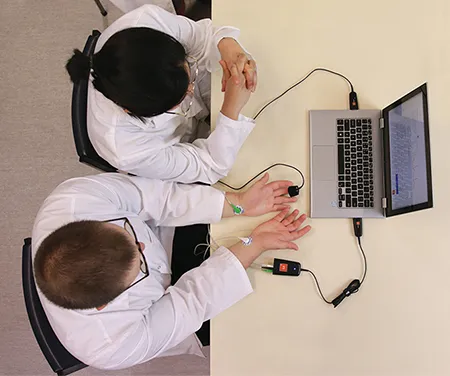
Students work together in the lab and develop technical and soft skills.
The rise in skills-based education
Skills are important in our competitive job market, and students know it.
“Nearly half (47%) of students reported selecting their institution for career prospects, but only 11% felt very prepared for work. Students who feel well-prepared are four times more likely to have a great university experience.”
- Connected Student Report, 3rd Edition | Salesforce.org
It’s obvious that physiology courses that teach hands-on skills will be favored by today’s savvy students. However, sometimes a physiology lab course isn’t equipped to provide these skills…
Problems you face as a physiology educator
There are some common problems found in physiology labs that can lower student satisfaction and achievement - and make your life harder as an educator.
62% of A&P 1 students scored lower than a C (Hopper, 2011).
Problem 1: No or old equipment
Some new physiology educators inherit a lab that’s full of old, flaky equipment - or a lab that has zero technology at all! It’s pretty hard to engage students using only pen and paper in the current attention economy.
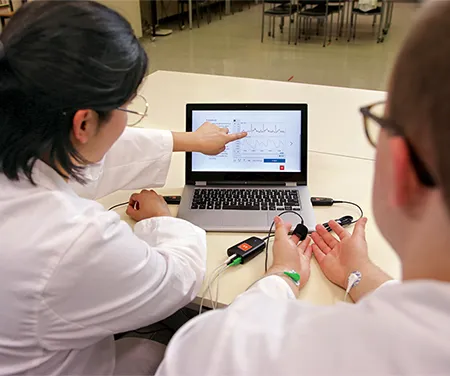
Active learning lets students connect theory with practice.
Modern devices that record a wide range of physiology data mean your students can link theory to practice, and build confidence that will serve them in their eventual careers.
Practical, easy-to-use sensors also engage students by empowering them to measure their own physiological activity - discovering the magic of physiology in real time!
Once students are confident, there are so many possibilities - like using Lt Sensors to build and test their own experiments.
“It was great fun. I find that Lt really provides a simple way for us to unleash our creative potential.”
- Katie Robertson, Third-year Neuroscience student, University of Edinburgh, Scotland
Related: What’s it like to use Lt as a student? “Great fun…the hands-on side of it really accelerates the learning” »
Problem 2: Incompatible devices
Asking students to “bring your own device” (also known as BYOD) is becoming more common. This is often a way for institutions to save on costs.
However, a BYOD policy can cause headaches if existing hardware in the human physiology lab is only compatible with a specific operating system.
Many students use Mac. Fortunately, our new Lt Sampling app means that your students can sample powerful, good-quality physiological data on both macOS® and Windows devices. If your students bring their own device to the lab (BYOB), that’s not a problem - simply plug in our hardware via USB and you’re good to go.
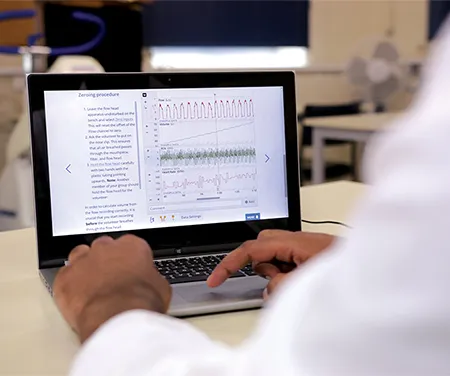
Students get an authentic human physiology lab experience using their own laptop - and your school cuts costs. Win-win!
Contact us to start using Lt Sensors on macOS® »
Problem 3: Troubleshooting
Trouble-shooting has its place - physiology students need to learn how to deal with knotty, unexpected problems. However, undergraduate students are often learning in short lab periods - sometimes as short as 45 minutes.
In this situation, it’s better to use equipment that is accurate and powerful - and that doesn’t require a lot of troubleshooting. Keep reading and you’ll discover the exact equipment you can use in 10 common physiology lab experiments.
Problem 4: Lack of support
How many times have you used an old bit of equipment and discovered that the company that created it was obsolete - or worse, exists but can’t be reached by telephone or email?
As a company built by scientists for scientists, we’re well aware of this frustration. We pride ourselves on the best customer support in the business. You can contact us via your dedicated representative, our website, or our social media channels.
How to collect hassle-free and accurate physiology data
The solution to these many frustrations in your physiology course is simple.
We’ve condensed the power and accuracy of the traditional teaching PowerLab into our range of Lt Sensors.
These Sensors let you achieve the same learning outcomes as the teaching PowerLab with fewer cables and complications.
With these compact, single-cable sensors, your students can conduct flexible data sampling via USB on both macOS® and Windows.
Tackle the most common labs in the human physiology curriculum by picking and choosing across the comprehensive range.

“Very easy to use - I would 100% recommend Lt Sensors for undergraduate physiology.”
- Dr Mike Gill, Professional Practice Fellow, Physiology, University of Otago, New Zealand
How to collect data for 10 popular physiology lab experiments
Based on our exclusive data, your peers use these labs the most. Find out the exact equipment they use for these physiology experiments and start teaching easily, inside and outside the lab.
1. Heart and ECG
>12,000 student runs in 2023
Students measure and analyze the ECG and pulse, and discuss the relationship between them. They then compare variations between the different leads of a 12-lead ECG, and perform an Einthoven triangle analysis.
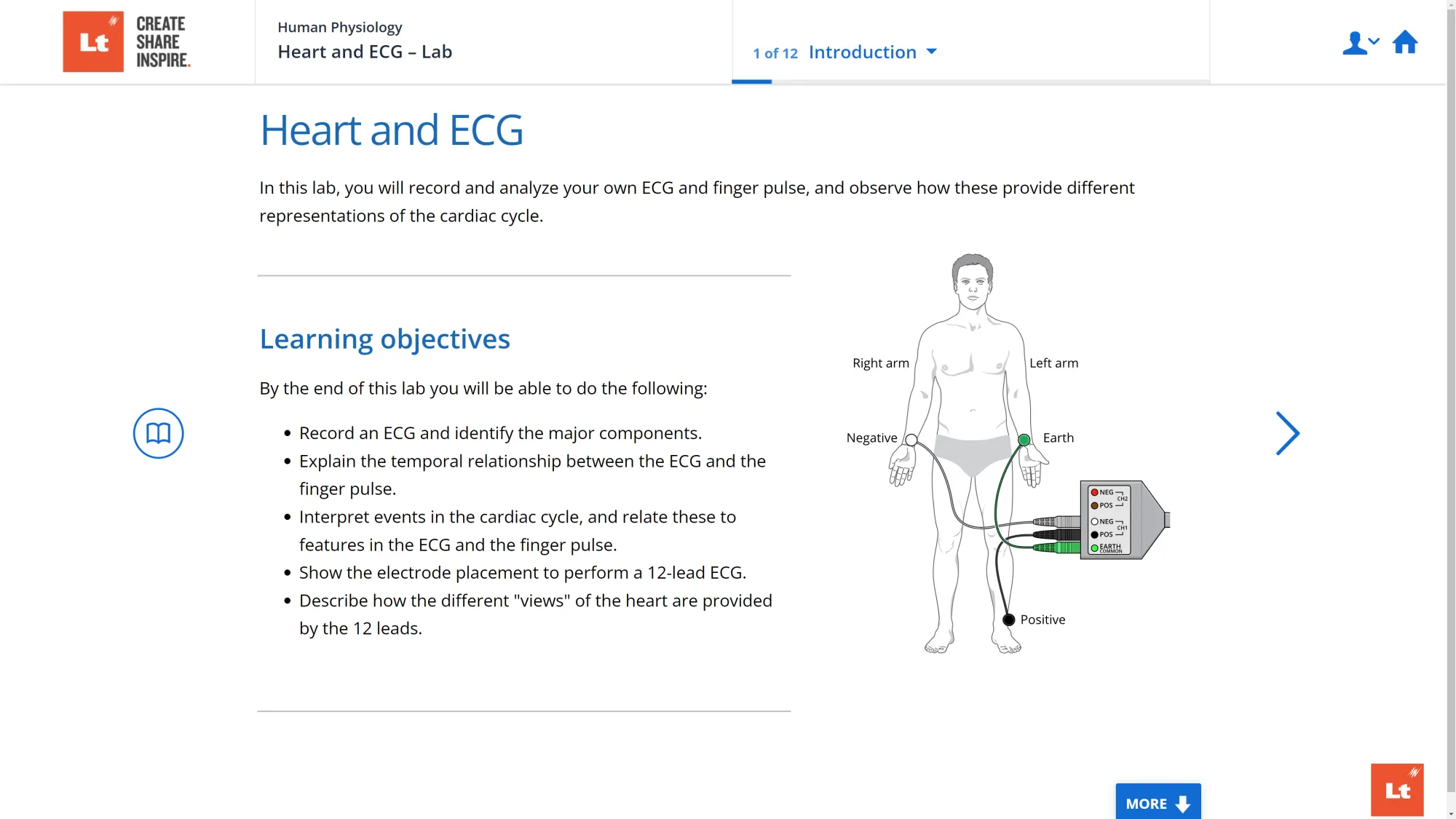
Equipment used:
2. Muscle and EMG
>12,000 student runs in 2023
Students record EMG during voluntary muscle contractions and investigate how coactivation and contractile force changes with increasing demand. They measure the decline in grip force during a sustained contraction and examine muscle fatigue. Finally, they discover how visual feedback, verbal feedback, and rest impact our ability to sustain muscle contractions.
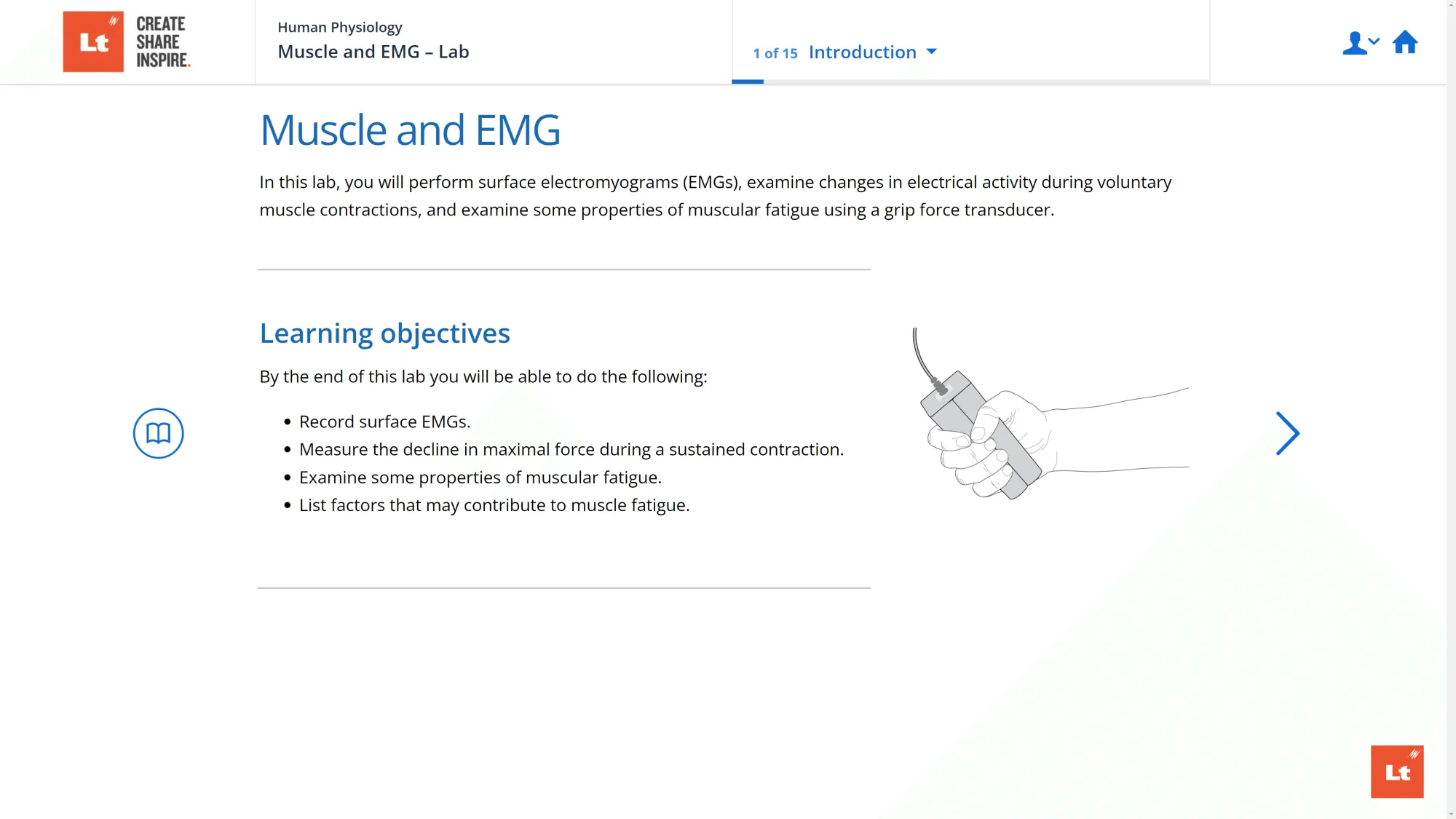
Equipment used:
3. Lung Volumes
>11,000 student runs in 2023
Students record and analyze spirometry signals to derive static respiratory parameters, such as lung volumes and capacities. They perform basic tests of pulmonary function and stimulate breathing with hyperinflated lungs.
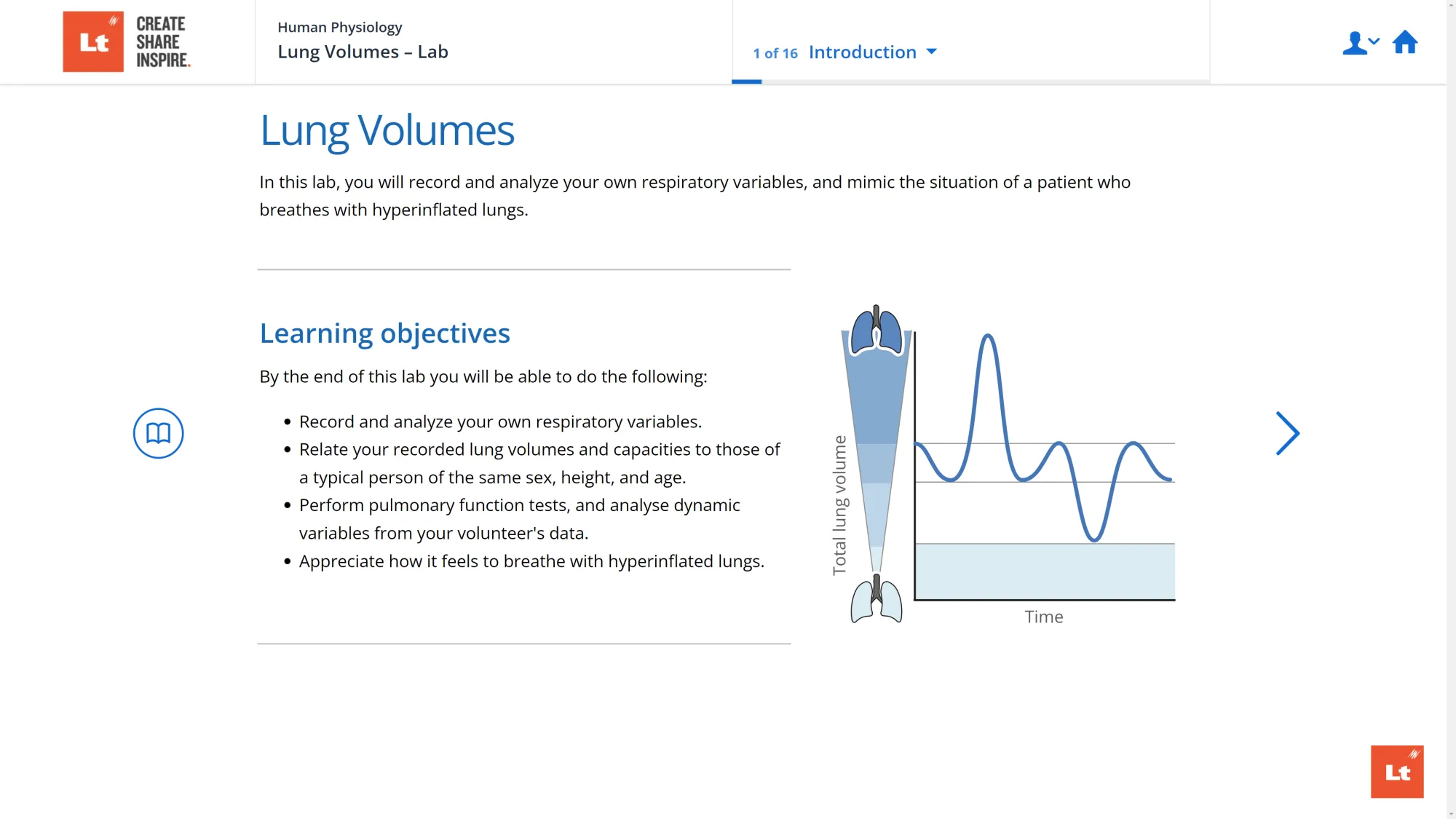
Equipment used:
4. Blood Pressure
>10,000 student runs in 2023
Students learn how to measure blood pressure with a stethoscope, blood pressure cuff and sphygmomanometer, then visualize changes during a measurement with a cardio microphone. They assess peripheral circulation changes with a finger pulse transducer, then examine the effect on blood pressure in the arm with changes in cuff location, cuff size, and arm position. Finally, students investigate how leg position affects leg blood pressure.
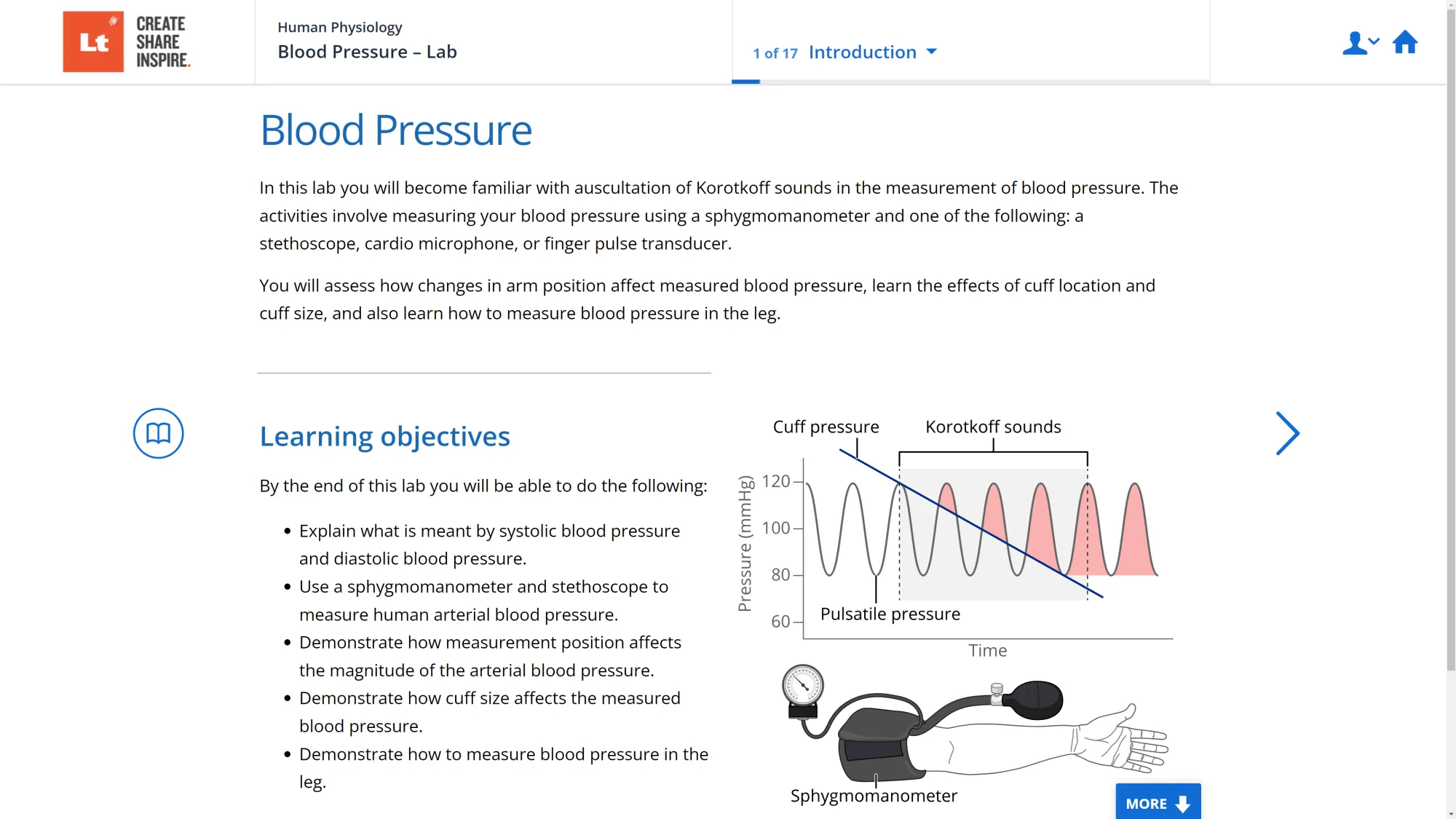
Equipment used:
5. Skeletal Muscle Function
>9,000 student runs in 2023
Students revise the basic types of contractions. They record and measure muscular twitch responses to nerve stimulation and observe recruitment as stimulus strength increases. Finally, they test the effects of stimulus timing on muscle twitch summation and tetanus.

Equipment used:
6. Reflexes and Reaction Times
>8,000 student runs in 2023
Students explore the similarities and differences of reflexes and reactions. Students first examine simple reflexes, and then examine their reaction times to stimuli under different conditions.
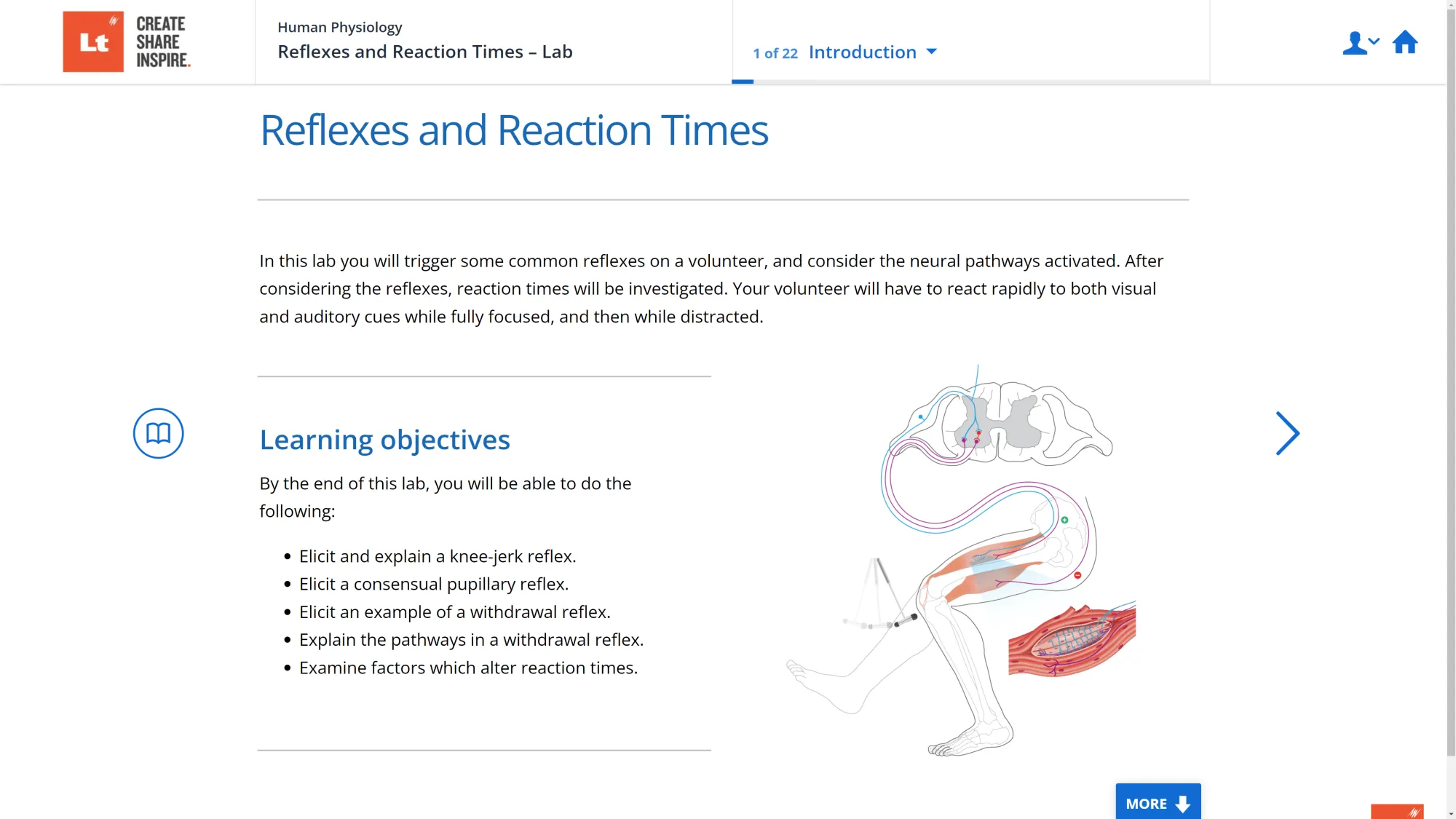
Equipment used:
7. Sensory Physiology
>7,000 student runs in 2023
Students familiarize themselves with their senses and experiment with sensory illusions. Learn how the body detects and perceives different sensations including touch, sight, taste, and movement. These activities are suitable for students at all levels, and can be performed without hardware.
![A screenshot of the Sensory Physiology Lab in Lt showing a painting by Louis-Leopold Boilly called Les cinq sens [The five senses].](/sites/default/files/styles/banner/public/2024-02/Lt%20Sampling%20Engine_Sensory%20Physiology.png.webp?itok=aKKqjykh)
Equipment used:
- NA
8. Heart Sounds
>7,000 student runs in 2023
Students listen to heart sounds via a stethoscope by performing auscultation on a volunteer. They record and analyze an ECG in conjunction with a phonocardiogram (PCG) and pulse measurements. They investigate the timing of ECG events and peripheral pulse relative to heart sounds, to determine their relationships.

Equipment used:
9. Airflow
>6,000 student runs in 2023
Students record spirometry signals and analyze these to derive dynamic respiratory parameters, such as forced expired volume in 1 second (FEV1). They compare these with parameters derived from a simulated airway restriction exercise. Students also learn how to perform peak flow tests to assess pulmonary function.
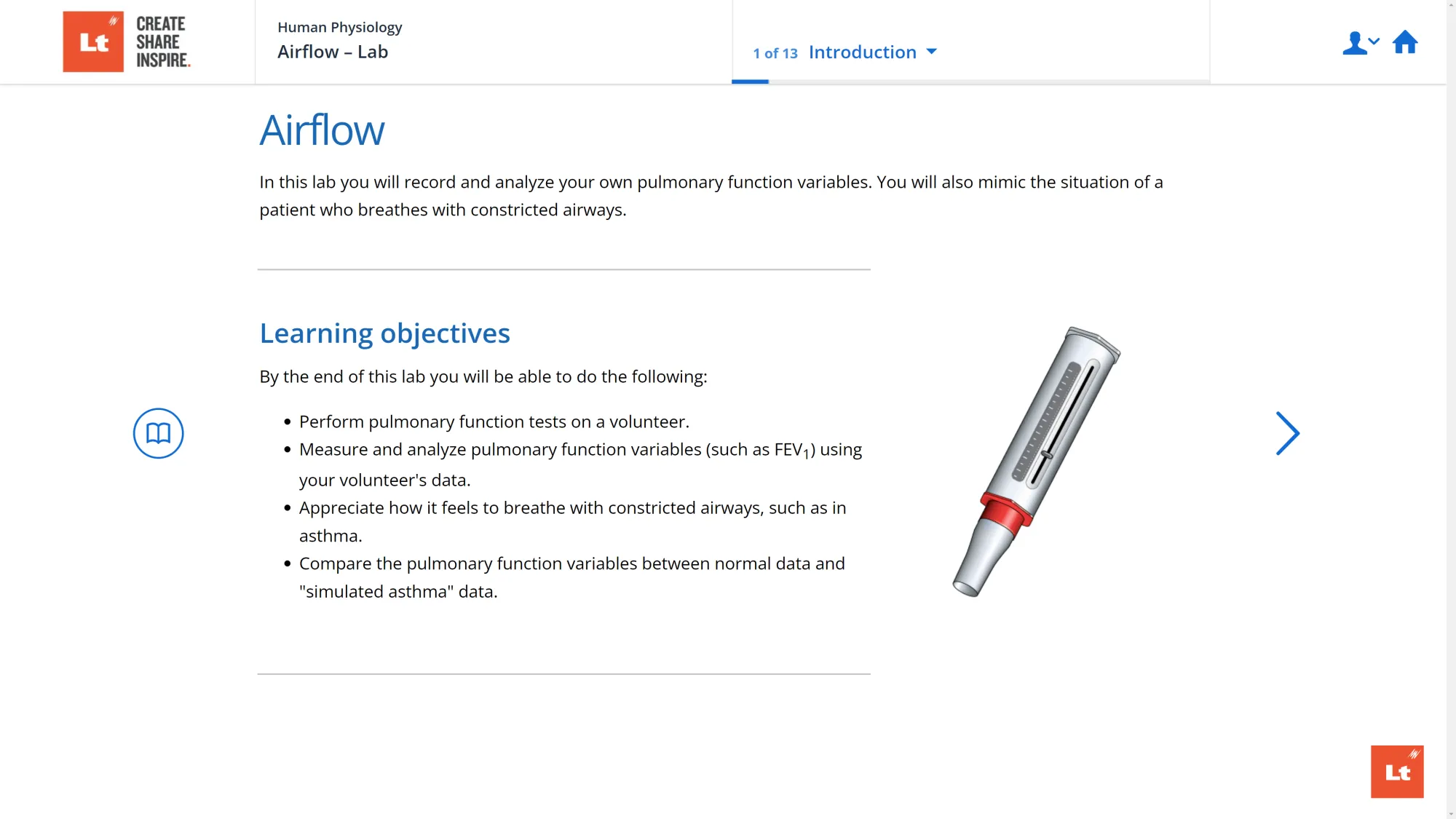
Equipment used:
10. Electroencephalography (EEG)
>6,000 student runs in 2023
Students explore the electrical activity of the brain. They record electroencephalograms, and analyze the effect of various interfering signals: the changes to alpha and beta waves with eyes open and shut, and the effects of mental and auditory activity on alpha and beta waves.
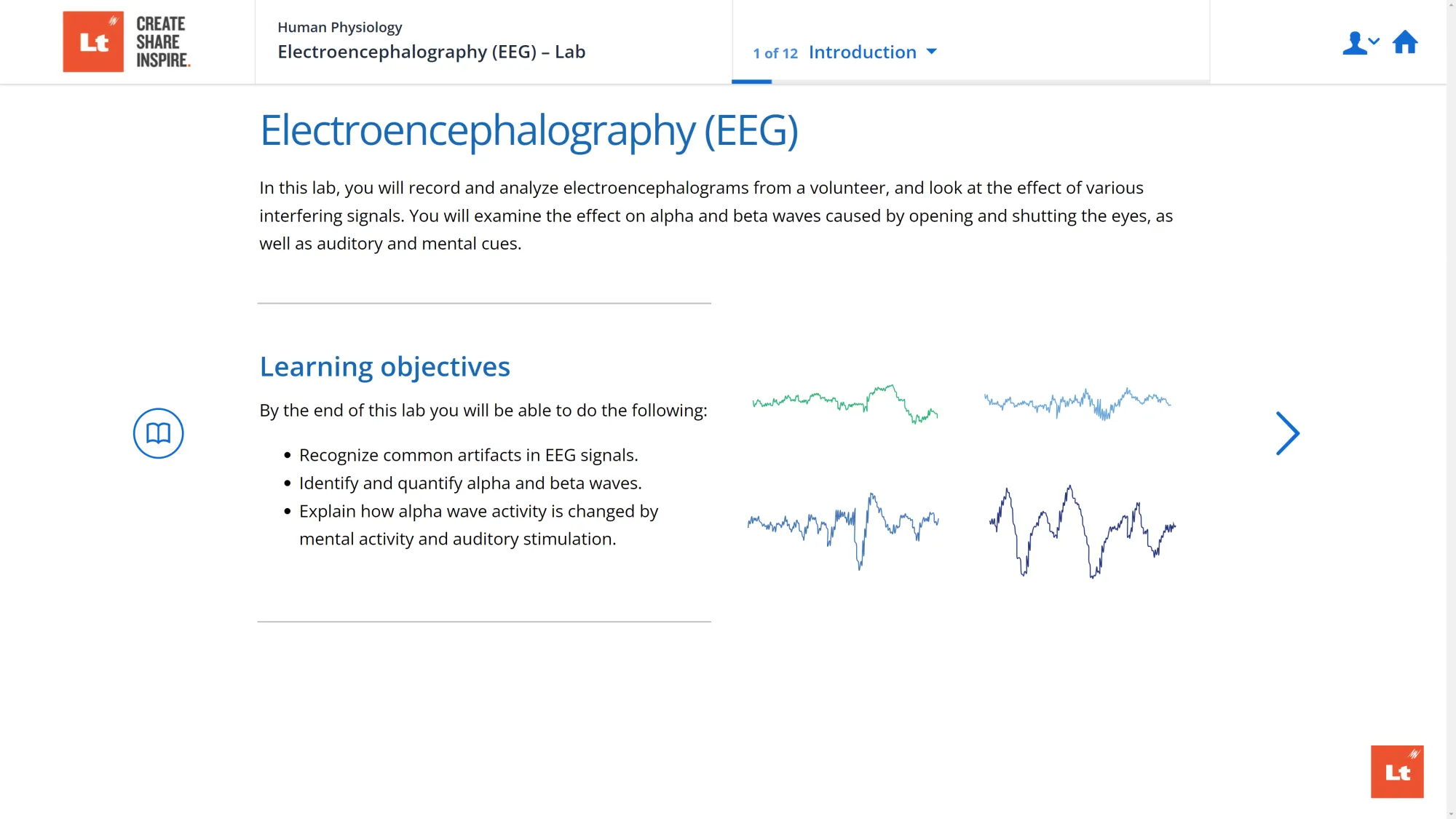
Equipment used:
Ensure student satisfaction and success in your physiology class
Make teaching easier and more enjoyable - for yourself and your physiology students - with these effective, powerful sensors. Get in touch below - we look forward to helping you get started in your human physiology lab.
Our Lt Sensors Kits
Lt Sensors can be purchased individually or in our Beginner and Intermediate Human Physiology Lt Sensor Kits. Each kit contains a different number of Lt Sensors which interface with a variety of labs from the Lt Sensor Human Physiology Collection.
Beginner Human Physiology Sensor Kit
The human physiology experiment equipment provided in this kit is suitable for entry-level data acquisition. It contains all the equipment needed for data acquisition in some of our human physiology labs.
Intermediate Human Physiology Sensor Kit
The human physiology experiment equipment provided in this kit is suitable for investigating and recording a wide range of biological signals. It contains eight sensors, as well as accessories and consumables needed for data acquisition across many subject areas in our human physiology labs.




